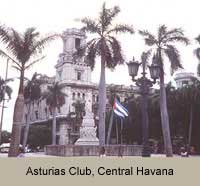


Her Historical Context:

The discovery of her work by an large and enthusiastic audience in her home country when she was in her 80’s, really for the first time and after more than 25 years of internal exile, must have been like the return of the dove in her poem, “Noah,” carrying the green branch that signifies a safe harbor. {Audio Link: Noah}

The return of the dove began in the 1980's, when Cuban art and cultural life began to open, permitting alternatives to the officially-approved macho heroics of Socialist Realism. Fantastic, religious, feminine, intimate and playful art began to become permissible again in Cuba. In this new context, Dulce María was rediscovered and rehabilitated, becoming a celebrity in her 80’s and 90’s.
In a situation such as the Cuba of the past 40 years, it is not surprising that a person as private in temperament as Dulce María Loynaz would seclude herself, or that her public statements have always been extremely discreet, patriotic and yet non-political. More perplexing is the fact that, according to all her closest friends, she entirely stopped writing poetry when the Revolution triumphed in 1959. Although her work was characterized by so many of her friends as a private vocation, perhaps the total disappearance of the social world which fostered it, in addition to the loss of access to her strongest artistic supporter, her husband Pablo Alvarez de Caña, silenced her. Apart from a scattering of academic papers about other writers and a never-completed history of her beautiful El Vedado neighborhood in Havana, begun toward the end of her life, she seems to have stopped writing in 1959.